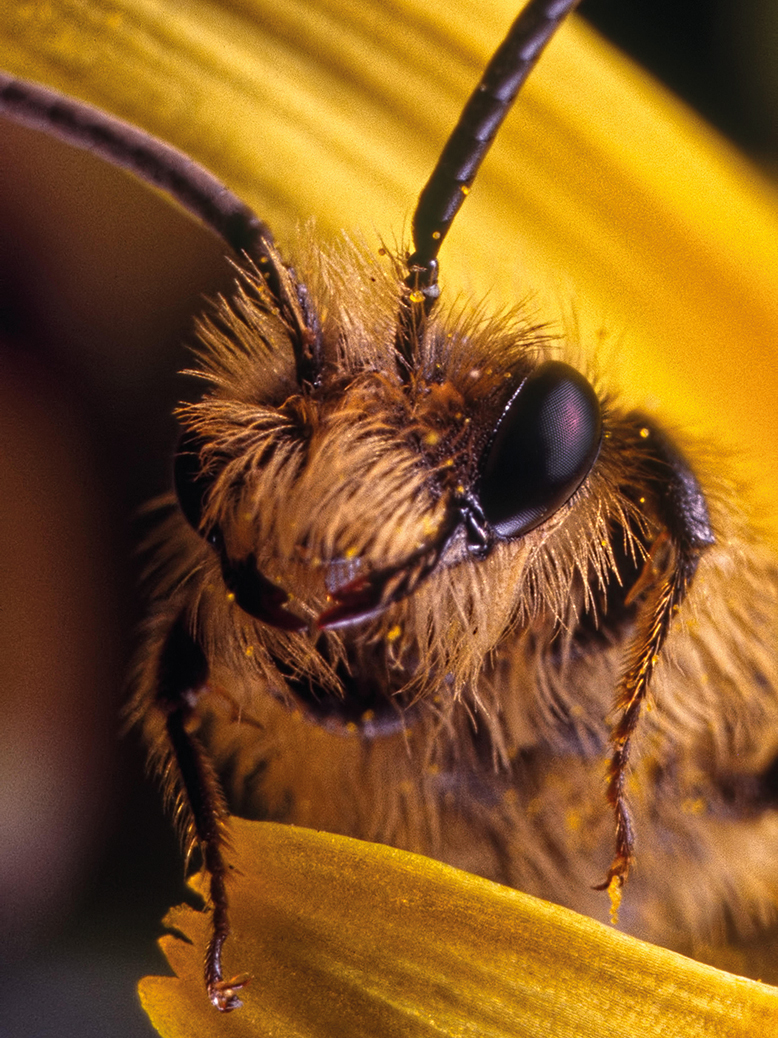Blank skies, a blanker mood. It’s a grey March morning, and I’m taking a short cut through a park to Cambridge city centre. The lime trees are bare, the grass sparse at the end of winter. Sunk in worry about unanswered emails and missed deadlines, I’m keeping my eyes on the ground as I walk. The park is littered with the usual detritus: a flattened cigarette butt, a torn scrap of sweet wrapper, a crushed rosette of greater plantain leaves, and – what’s that? There’s a small, dark hole in the ground by my feet. The soil around it bears the scuff of someone else’s footprint. It looks artificial, like it was made by someone pushing a pencil into the ground and lifting it out again. Even in a city famed for its intellectual eccentricity, this seems an unlikely cause. I’m still puzzling over the hole when I step over two more. Both are surrounded by tiny heaps of crumbled soil, and that’s enough to tell me what they are.
My mood lifts. The holes mean spring is here, and I’d forgotten it was coming at all, so inward was my mood. I scan the ground about me. A few feet away there’s a flicker of movement, grass stems twitching minutely. Walking closer, I see it: a fluffy bee the colour of a fox in sunlight. It has a black, glossy head, black legs, a delightfully ambling gait. It lifts off, circles a few times, then alights near another hole. It clambers in and disappears inside.
It’s a female tawny mining bee, a kind of solitary bee. These make up 90 per cent of our bee species. Unlike honeybees and bumblebees, they forage and nest alone. They’re a diverse group of species, ranging from tiny and shiny to large and fluffy, and we notice them mostly from their activities: semi-circles cut from leaves, the holes they excavate in walls, or on our lawns in spring.
Solitary bees lay their eggs on balls of pollen mixed with nectar, walling them up into separate compartments in their nest before sealing up the entrance and leaving it for ever. Their larvae hatch, feed, grow, then hibernate over the winter before pupating and emerging the following year.
The nests come in many forms. Plasterer bees tunnel into sand and loam, licking the walls with their tongues to deposit an antifungal, waterproof, cellophane-like substance – a kind of polythene – to protect the food store. Cavity-nesting bees use hollow plant stems or burrow into brick: the first solitary bees I saw as a child were red-tailed mason bees in a Victorian walled garden, where they’d tunnelled into brick so old and soft you could brush thick smears of red from its surface with your fingers. Leaf-cutting bees harvest leaves to compartmentalise their nests, and empty snail shells provide nests for red mason bees. After they’ve sealed the shell, they pile plant stems and grass blades on top to stay hidden from predators.
I sit on the grass and watch the bees for a long time. Most are female, but I see a few males, too – they’re browner, less fluffy, and doomed to die soon after mating. Conducting a bit of on-the-spot research on my phone, I read that their holes can be up to a foot deep, and that tawny mining bees are among the first to emerge each year – most choosing to nest in the summer months. I discover that ornamental bee houses can be very bad for solitary bees (the bamboo tubes they offer as nesting places are far too short, and without yearly cleaning, get overrun with bee-killing lice). I discover, too, that because solitary bees lack the pollen baskets of honeybees and bumblebees, they leave a lot of pollen behind as they forage, which makes them extremely good pollinators.
But soon I abandon my fact-collecting expedition to sit and watch the bees come and go. There are a lot of bees. There’s one by my left foot now. I let her climb on to my finger and raise her to my eyes for a better view. She’s the size of my fingernail, absurdly fluffy on top, her red fur the texture of troll doll hair. Her underparts are soft. Grains of sand are stuck to her mandibles. When I put her back on the ground she wipes her antennae with one foot and flies unhurriedly away. Soon, her hole and all the others will be carefully sealed up with mud and plant fibres, disappearing from view. And all year people will cross this turf unaware of these tiny miracles of construction and the life hidden beneath their feet.
It’s April now; I’m scared of what is happening in America and I’m still thinking about the bees, partly because they were digging holes to keep their most precious creations safe. It’s an effort that resonates, as we witness authoritarian regimes extend their reach. But I think, too, of how honeybee societies have been seen as models for humanity for millennia: we celebrate bees’ industriousness, their cooperation, their foresight in storing food for winter, their loyalty to their monarch, the careful tending of their young.
Solitary bees haven’t meant much to us, if anything at all. But all this time they have been busy making holes in our walls, digging underground nests in our parks, snipping semi-circles from the leaves of roses. That makes them subversive creatures – not because they sting us or seek to overthrow us, but because they turn the earth beneath us and quietly take our structures for their own. They let us imagine humanity not as something opposed to nature, or as having destructive dominion over it, but as a substrate for beings that are not like us to subsist, thrive and continue, even in this dark and fearful spring.
Helen Macdonald’s essay collection “Vesper Flights” is published by Jonathan Cape
[See also: David Hockney writ large]
This article appears in the 10 Apr 2025 issue of the New Statesman, Spring Special 2025






